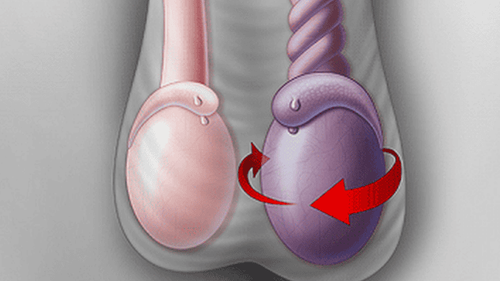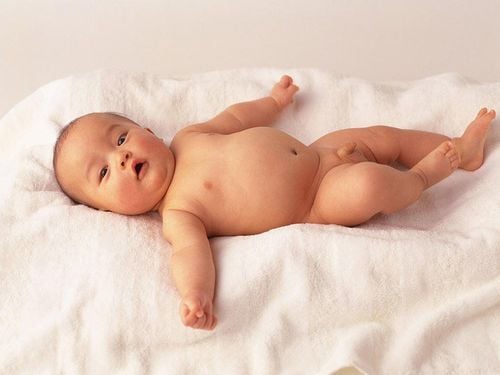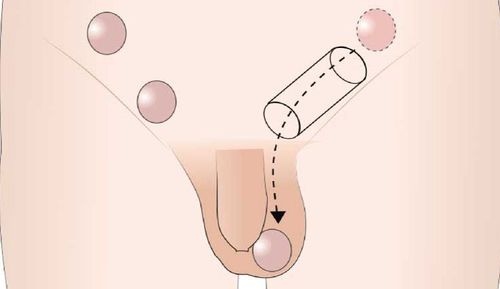This is an automatically translated article.
The article was professionally consulted with Resident Doctor, Master Dang Thi Ngoan - Department of Pediatrics - Neonatology - Vinmec Ha Long International General Hospital.In cases where one or both testicles do not descend into the scrotum but are located in the abdomen or only partially descend into the scrotum, these are called undescended testicles in children. This condition, if left untreated, can lead to reproductive effects and testicular cancer.
1. What are undescended testicles in children?
Undescended testicles in children is a condition in which the testicles do not descend into the scrotum of a baby boy after birth. This condition is also known as testicular malformation. In some cases, both testicles fail to descend into the scrotum.
If your baby has one testicle, his scrotum will be smaller than usual and may be uneven or asymmetrical. If both testicles don't descend, your baby's scrotum may be symmetrical but look small or flat.
About 4% of full-term newborn boys are born with this condition, and nearly 30% of premature babies have one or no testicles after birth. It is more common in premature babies because the testicles begin to prolapse about eight weeks before birth.
During the first visit after birth, your baby's health care provider will check to see if both testicles have descended into the scrotum. If they don't drop by 4 months, make an appointment with a pediatric urologist.
In another condition called retractile testicles, the testicles are normal, but one or both testicles are pulled out of the scrotum by a muscle reflex. However, this is rare in infants and usually affects boys aged 6 to 10 years. It does not require treatment because the testicles will descend on their own during puberty.
2. What causes undescended testicles in children?
No one knows for sure what causes undescended testicles in babies . It may be related to a hormonal imbalance in the mother, or it may be an abnormal response of the baby's body to the normal hormones of the mother.
Sometimes, a fibrous mass develops that blocks the passage of the testicle, and in some cases, the muscles involved in bringing the testicle down don't work properly.

3. Treatments when children have undescended testicles
In most cases (about 70%), the undescended testicle will descend on its own within 6 months. But if by this point both testicles have not descended, the child will most likely need surgery. This type of surgery is usually done between the ages of 6 months and 2 years.
If the testicle is in the groin, the surgery is done laparoscopically: The procedure is to use a thin, light tube inserted through a small incision. This small incision helps the surgeon access the testicle and move it to the scrotum. If the testicle is in the abdomen, open surgery may be needed to bring it down into the scrotum. These surgeries are performed under general anesthesia and do not require an overnight stay.
In about 5% of cases, the surgeon will not find the testicle. This is sometimes referred to as a "disappearing testicle". If this is the problem, the surgeon will anchor the testicle well in the scrotum to prevent the testicle from twisting in the extra space.
4. What if only one testicle is left untreated?
The longer a testicle stays inside the body, where it's warmer than in the scrotum, the less likely it is that the sperm in that testicle will mature normally. If both testicles remain unprolapsed, it could be the cause of fertility problems later in life.
Undescended testicles are also associated with a slightly increased risk of testicular cancer later in life.
In rare cases, an untwisted testicle can twist and cut off its own blood supply, causing pain in the groin or scrotum. This can damage the testicles permanently. If your child has an undescended testicle and pain in this area, call the doctor for prompt treatment.
Please dial HOTLINE for more information or register for an appointment HERE. Download MyVinmec app to make appointments faster and to manage your bookings easily.














